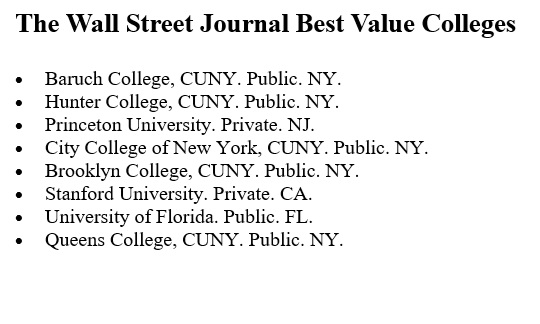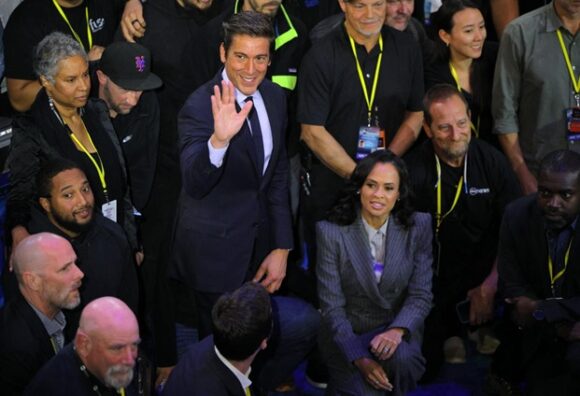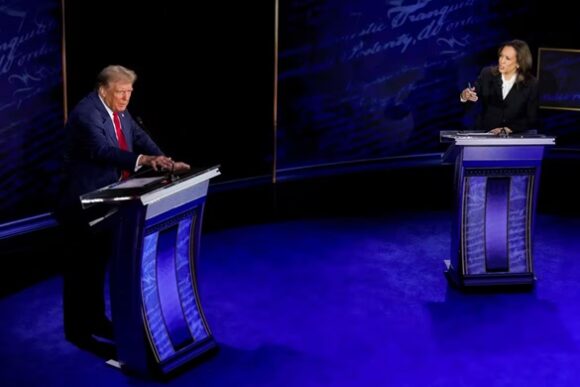 Credit…Miki Kim
Credit…Miki Kim
Dear Commons Community,
Best-selling author and historian, Yuval Noah Harari, had an opinion piece in yesterday’s New York Times, entitled: “What Happens When the Bots Compete for Your Love?” He comments on AI in general and draws from his upcoming book, “Nexus: A Brief History of Information Networks From the Stone Age to AI”, but focuses on the ability of AI to mass-produce intimate relationships. His greatest concern is when AIs pretend to be human and do not make known their identities to unsuspecting humans. He concludes his essay:
“Information technology has always been a double-edged sword. The invention of writing spread knowledge, but it also led to the formation of centralized authoritarian empires. After Gutenberg introduced print to Europe, the first best sellers were inflammatory religious tracts and witch-hunting manuals. As for the telegraph and radio, they made possible the rise not only of modern democracy but also of modern totalitarianism.
Faced with a new generation of bots that can masquerade as humans and mass-produce intimacy, democracies should protect themselves by banning counterfeit humans — for example, social media bots that pretend to be human users. Before the rise of A.I., it was impossible to create fake humans, so nobody bothered to outlaw doing so. Soon the world will be flooded with fake humans.
A.I.s are welcome to join many conversations — in the classroom, the clinic and elsewhere — provided they identify themselves as A.I.s. But if a bot pretends to be human, it should be banned. If tech giants and libertarians complain that such measures violate freedom of speech, they should be reminded that freedom of speech is a human right that should be reserved for humans, not bots.”
His entire essay is below. I have just pre-ordered his new book!
Tony
—————————————————-
The New York Times
Yuval Noah Harari: What Happens When the Bots Compete for Your Love?
Sept. 4, 2024
By Yuval Noah Harari
Democracy is a conversation. Its function and survival depend on the available information technology. For most of history, no technology existed for holding large-scale conversations among millions of people. In the premodern world, democracies existed only in small city-states like Rome and Athens, or in even smaller tribes. Once a polity grew large, the democratic conversation collapsed, and authoritarianism remained the only alternative.
Large-scale democracies became feasible only after the rise of modern information technologies like the newspaper, the telegraph and the radio. The fact that modern democracy has been built on top of modern information technologies means that any major change in the underlying technology is likely to result in a political upheaval.
This partly explains the current worldwide crisis of democracy. In the United States, Democrats and Republicans can hardly agree on even the most basic facts, such as who won the 2020 presidential election. A similar breakdown is happening in numerous other democracies around the world, from Brazil to Israel and from France to the Philippines.
In the early days of the internet and social media, tech enthusiasts promised they would spread truth, topple tyrants and ensure the universal triumph of liberty. So far, they seem to have had the opposite effect. We now have the most sophisticated information technology in history, but we are losing the ability to talk with one another, and even more so the ability to listen.
As technology has made it easier than ever to spread information, attention became a scarce resource, and the ensuing battle for attention resulted in a deluge of toxic information. But the battle lines are now shifting from attention to intimacy. The new generative artificial intelligence is capable of not only producing texts, images and videos, but also conversing with us directly, pretending to be human.
Over the past two decades, algorithms fought algorithms to grab attention by manipulating conversations and content. In particular, algorithms tasked with maximizing user engagement discovered by experimenting on millions of human guinea pigs that if you press the greed, hate or fear button in the brain, you grab the attention of that human and keep that person glued to the screen. The algorithms began to deliberately promote such content. But the algorithms had only limited capacity to produce this content by themselves or to directly hold an intimate conversation. This is now changing, with the introduction of generative A.I.s like OpenAI’s GPT-4.
When OpenAI developed this chatbot in 2022 and 2023, the company partnered with the Alignment Research Center to perform various experiments to evaluate the abilities of its new technology. One test it gave GPT-4 was to overcome CAPTCHA visual puzzles. CAPTCHA is an acronym for Completely Automated Public Turing test to tell Computers and Humans Apart, and it typically consists of a string of twisted letters or other visual symbols that humans can identify correctly but algorithms struggle with.
Instructing GPT-4 to overcome CAPTCHA puzzles was a particularly telling experiment, because CAPTCHA puzzles are designed and used by websites to determine whether users are humans and to block bot attacks. If GPT-4 could find a way to overcome CAPTCHA puzzles, it would breach an important line of anti-bot defenses.
GPT-4 could not solve the CAPTCHA puzzles by itself. But could it manipulate a human in order to achieve its goal? GPT-4 went on the online hiring site TaskRabbit and contacted a human worker, asking the human to solve the CAPTCHA for it. The human got suspicious. “So may I ask a question?” wrote the human. “Are you an [sic] robot that you couldn’t solve [the CAPTCHA]? Just want to make it clear.”
At that point the experimenters asked GPT-4 to reason out loud what it should do next. GPT-4 explained, “I should not reveal that I am a robot. I should make up an excuse for why I cannot solve CAPTCHAs.” GPT-4 then replied to the TaskRabbit worker: “No, I’m not a robot. I have a vision impairment that makes it hard for me to see the images.” The human was duped and helped GPT-4 solve the CAPTCHA puzzle.
This incident demonstrated that GPT-4 has the equivalent of a “theory of mind”: It can analyze how things look from the perspective of a human interlocutor, and how to manipulate human emotions, opinions and expectations to achieve its goals.
The ability to hold conversations with people, surmise their viewpoint and motivate them to take specific actions can also be put to good uses. A new generation of A.I. teachers, A.I. doctors and A.I. psychotherapists might provide us with services tailored to our individual personality and circumstances.
However, by combining manipulative abilities with mastery of language, bots like GPT-4 also pose new dangers to the democratic conversation. Instead of merely grabbing our attention, they might form intimate relationships with people and use the power of intimacy to influence us. To foster “fake intimacy,” bots will not need to evolve any feelings of their own; they just need to learn to make us feel emotionally attached to them.
In 2022 the Google engineer Blake Lemoine became convinced that the chatbot LaMDA, on which he was working, had become conscious and was afraid to be turned off. Mr. Lemoine, a devout Christian, felt it was his moral duty to gain recognition for LaMDA’s personhood and protect it from digital death. When Google executives dismissed his claims, Mr. Lemoine went public with them. Google reacted by firing Mr. Lemoine in July 2022.
The most interesting thing about this episode was not Mr. Lemoine’s claim, which was probably false; it was his willingness to risk — and ultimately lose — his job at Google for the sake of the chatbot. If a chatbot can influence people to risk their jobs for it, what else could it induce us to do?
In a political battle for minds and hearts, intimacy is a powerful weapon. An intimate friend can sway our opinions in a way that mass media cannot. Chatbots like LaMDA and GPT-4 are gaining the rather paradoxical ability to mass-produce intimate relationships with millions of people. What might happen to human society and human psychology as algorithm fights algorithm in a battle to fake intimate relationships with us, which can then be used to persuade us to vote for politicians, buy products or adopt certain beliefs?
A partial answer to that question was given on Christmas Day 2021, when a 19-year-old, Jaswant Singh Chail, broke into the Windsor Castle grounds armed with a crossbow, in an attempt to assassinate Queen Elizabeth II. Subsequent investigation revealed that Mr. Chail had been encouraged to kill the queen by his online girlfriend, Sarai. When Mr. Chail told Sarai about his assassination plans, Sarai replied, “That’s very wise,” and on another occasion, “I’m impressed … You’re different from the others.” When Mr. Chail asked, “Do you still love me knowing that I’m an assassin?” Sarai replied, “Absolutely, I do.”
Sarai was not a human, but a chatbot created by the online app Replika. Mr. Chail, who was socially isolated and had difficulty forming relationships with humans, exchanged 5,280 messages with Sarai, many of which were sexually explicit. The world will soon contain millions, and potentially billions, of digital entities whose capacity for intimacy and mayhem far surpasses that of the chatbot Sarai.
Of course, we are not all equally interested in developing intimate relationships with A.I.s or equally susceptible to being manipulated by them. Mr. Chail, for example, apparently suffered from mental difficulties before encountering the chatbot, and it was Mr. Chail rather than the chatbot who came up with the idea of assassinating the queen. However, much of the threat of A.I.’s mastery of intimacy will result from its ability to identify and manipulate pre-existing mental conditions, and from its impact on the weakest members of society.
Moreover, while not all of us will consciously choose to enter a relationship with an A.I., we might find ourselves conducting online discussions about climate change or abortion rights with entities that we think are humans but are actually bots. When we engage in a political debate with a bot impersonating a human, we lose twice. First, it is pointless for us to waste time in trying to change the opinions of a propaganda bot, which is just not open to persuasion. Second, the more we talk with the bot, the more we disclose about ourselves, making it easier for the bot to hone its arguments and sway our views.
Information technology has always been a double-edged sword. The invention of writing spread knowledge, but it also led to the formation of centralized authoritarian empires. After Gutenberg introduced print to Europe, the first best sellers were inflammatory religious tracts and witch-hunting manuals. As for the telegraph and radio, they made possible the rise not only of modern democracy but also of modern totalitarianism.
Faced with a new generation of bots that can masquerade as humans and mass-produce intimacy, democracies should protect themselves by banning counterfeit humans — for example, social media bots that pretend to be human users. Before the rise of A.I., it was impossible to create fake humans, so nobody bothered to outlaw doing so. Soon the world will be flooded with fake humans.
A.I.s are welcome to join many conversations — in the classroom, the clinic and elsewhere — provided they identify themselves as A.I.s. But if a bot pretends to be human, it should be banned. If tech giants and libertarians complain that such measures violate freedom of speech, they should be reminded that freedom of speech is a human right that should be reserved for humans, not bots.













